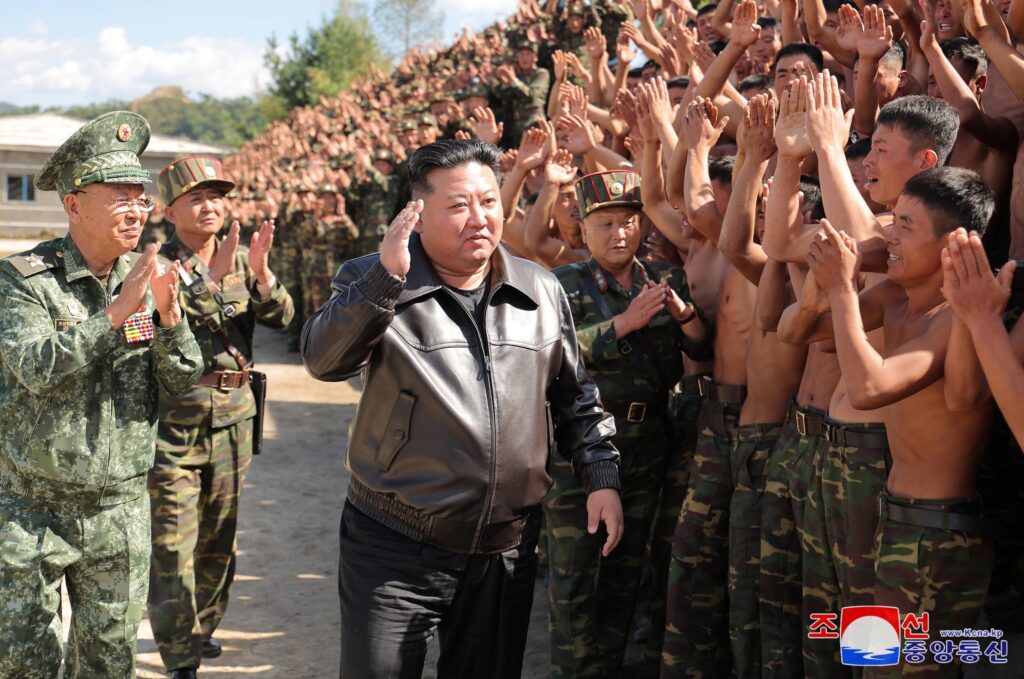In a chilling display of belligerence, North Korean leader Kim Jong Un has once again raised the specter of nuclear warfare, threatening to unleash the destructive power of his country’s arsenal on South Korea and the United States. This latest provocation from Pyongyang has sent shockwaves through the international community, raising concerns about the stability of the Korean Peninsula and the potential for a catastrophic conflict.
Overview of North Koreas Latest Threats
Kim Jong Un has once again escalated tensions by threatening to use nuclear weapons against both South Korea and the United States. This latest provocation comes in response to joint military exercises between the two nations, which North Korea views as a direct threat to its sovereignty. The dictator’s threats have raised concerns about the potential for a renewed conflict on the Korean peninsula.
The international community is closely monitoring the situation, with many world leaders condemning North Korea’s aggressive stance. The United Nations Security Council is expected to hold an emergency meeting to discuss the escalating tensions and explore possible responses. Despite the ongoing threats, South Korea and the US remain committed to diplomatic efforts to denuclearize North Korea and ensure peace and stability in the region.
| Country | Response |
|---|---|
| United States | Condemned the threats and reaffirmed its commitment to defending its allies. |
| South Korea | Called for dialogue and de-escalation to prevent further conflict. |
| China | Expressed concern and urged all parties to exercise restraint. |
Analysis of Kim Jong Uns Rhetoric and Intentions
Kim Jong Un’s recent rhetoric once again highlights his willingness to use nuclear weapons as a threat against South Korea and the United States. This aggressive stance is not new for North Korea, but it brings renewed tensions to the region and raises concerns about the stability of the Korean Peninsula.
In analyzing Kim Jong Un’s intentions, it is important to consider his motivations and goals. Some potential factors to consider include:
- Domestic control: Kim Jong Un may be using threats of nuclear weapons to maintain control over his population and project strength.
- International attention: By making such bold threats, Kim Jong Un may be seeking to draw attention from the international community and boost his regime’s standing on the global stage.
- Regional influence: These threats could also be a way for North Korea to assert its influence in the region and attempt to shape the geopolitical landscape to its advantage.
Implications for Regional Security and Diplomacy
Kim Jong-un has once again raised tensions on the Korean Peninsula by threatening to use nuclear weapons against South Korea and the United States. This latest provocation comes amidst stalled talks between North Korea and the international community regarding its nuclear program. The are significant, as the threat of nuclear conflict looms large.
Key points to consider:
- North Korea’s repeated threats of nuclear use destabilize the region and raise concerns about the potential for a nuclear conflict.
- The international community must carefully navigate diplomatic channels to prevent further escalation and find a peaceful resolution to the ongoing crisis.
Recommendations for De-escalation and Conflict Resolution
It is crucial for parties involved in the conflict between North Korea and South Korea to prioritize de-escalation and conflict resolution. Here are some recommendations to help ease tensions and prevent the use of nuclear weapons:
- Open lines of communication: Establishing direct communication channels between the leaders of North Korea, South Korea, and the United States can help prevent misunderstandings and reduce the risk of conflict escalation.
- Engage in diplomatic negotiations: Diplomatic negotiations, mediated by neutral parties if necessary, can provide a platform for discussing grievances, addressing concerns, and finding peaceful solutions to existing conflicts.
In addition to the suggestions above, it is essential for all parties to prioritize the maintenance of peace and stability in the region. By actively seeking peaceful resolutions and promoting dialogue, we can work towards a future free from the threat of nuclear warfare.
Final Thoughts
As tensions once again rise on the Korean Peninsula, the world watches nervously as North Korea’s leader, Kim Jong Un, threatens to use nuclear weapons against South Korea and the US. The possibility of conflict looms large, as the international community scrambles to find a peaceful resolution. Only time will tell if diplomacy will prevail or if the threat of nuclear war will become a devastating reality. As the situation unfolds, one thing remains certain: the need for caution, cooperation, and a commitment to peace has never been more urgent.


